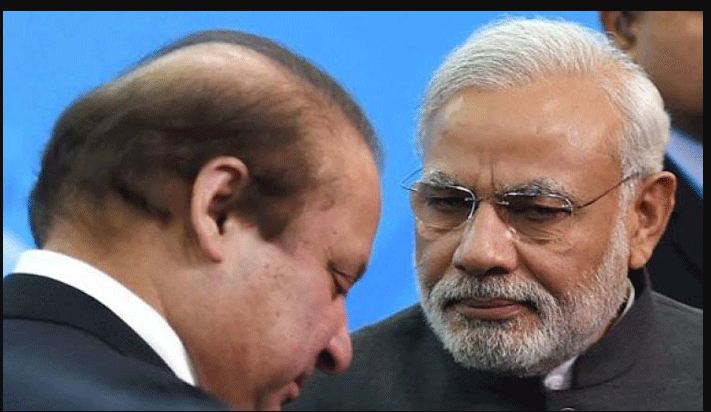Remember the surgical strikes? The operation conducted by the Indian Army with strong support from the incumbent NDA government that shocked the world with their successful retribution for the dastardly massacre of Indian soldiers at Uri in 2016, is now in the news again. This time, from an unattributed source, several videos of the actual strike have surfaced on prominent news channels, dispelling rumors of the veracity of the surgical strikes.
While most of those who have doubted whether the incident actually took place or not, including the likes of Arvind Kejriwal, Sanjay Nirupam etc. are yet to comment, the Congress party has already cried hoarse, accusing BJP of using the military operation for political mileage.
But the political slugfest aside, some of the facts that have been revealed along with the videos surfacing on national media, prove that the surgical strikes weren’t a decision taken in the heat of the moment. It was a carefully planned, cold blooded revenge that was sweetly served to the traders of terror across the border:
September 2016: India was reeling under intense shock and rage after the horrendous massacre of 19 Indian soldiers in the Uri terror attacks near the LOC, Jammu & Kashmir. Pressure was intensifying on the incumbent government under PM Modi and Defense Minister, Shri Manohar Parrikar, to act quickly and act hard.
No sooner had the news of the attacks surfaced than the diplomatic exchanges began.The Foreign Secretary of India S. Jaishankar summoned his Pakistani counterpart, Abdul Basit, and handed over the evidence of the involvement of Pakistani terrorists in the same, which Pakistan hotly denied, as usual.
It was after this meeting that the Central government decided to call the shots. A high level meeting was called up, where the then Army chief General Dalbir Singh Suhag and his deputy, Director General of Military Operations, Lt. General Ranbir Singh informed PM Modi, Defence Minister Shri Manohar Parrikar and National Security Advisor, Shri Ajit Doval about the possible methods of retribution that would be effective enough.
Following the meeting, a rough sketch for the surgical strikes was created. Strict instructions were issued to keep this meeting as secret as possible. In order to not let anyone know about this, none of the three chiefs of the respective armed forces arrived either in their uniform or with their staff. They attended these meetings incognito, with their phones switched off and in civilian clothes.
As India gathered diplomatic support through the External Affairs Minister’s visit to UN, PM Modi visited the top secret ‘war room’ on 23rd September, where Shri Doval informed him about the further action. For this special operation, two battalions from the Special Para Forces, along with the deadly Ghatak commandoes from the local regiments [stationed at ground zero at that time], including the Bihar regiment whose soldiers were murdered in the Uri attacks, and the adjacent Dogra regiment, were selected for this daring operation.
The selected soldiers were transported to the site for attacks by MI 17 helicopters and were told to hold until further instructions. By then, the Ghatak soldiers had also joined the group and by 26th September, the final order was implemented. The operational details for the 8 locations, which were to be attacked by the Indian forces, were sent in absolute secrecy. Soon enough, the day had come.
The 8 locations earmarked for the operation covered 3 significant divisions of the Pakistani army, and thus gave cover to the terror launch pads that would be used against India. In order to avoid detection by the Pakistani radars and anti personnel aircrafts, most of the soldiers crossed the LOC on foot, while most of the para troopers dropped from heights as high as 35000 feet, which were out of the range of the Pakistani radar deployed to detect the presence of intruders.
On the occasion of Bhagat Singh’s 109th birth anniversary, i.e. 28 September, the soldiers finally moved into the PoK region. At midnight, the operation began and the Indian forces attacked the terror camps and launch pads with all guns blazing. It was so quick, and so lethal, that none of the enemies could effectively respond to the same. All the terror camps were destroyed beyond repair, and even regular Pakistani soldiers suffered heavy casualties, with more than 12 soldiers dead and several others injured.
There is no official figure as to how many casualties the Pakistanis suffered, but going by the ferocity that the Indian Army displayed in this operation, the death count cannot be any less than 200-300 soldiers, including the homegrown terrorists that Pakistan carefully nurtures in their pursuit to wage proxy war against India.
The operations were swiftly recorded on the cameras attached to the helmets of the para commandoes taking part in the operation. On 29 September, in a highly publicized press conference, the DGMO, Lt. General Ranbir Singh declared the operation a success.
As the videos are now in public, the doubts about the truth of the surgical strikes should be laid to rest. The general masses never had any reasons to doubt the Indian Army, but a few scheming politicians were spoiling Army’s name just for a few votes. We hope they’ve learnt a lesson this time.
